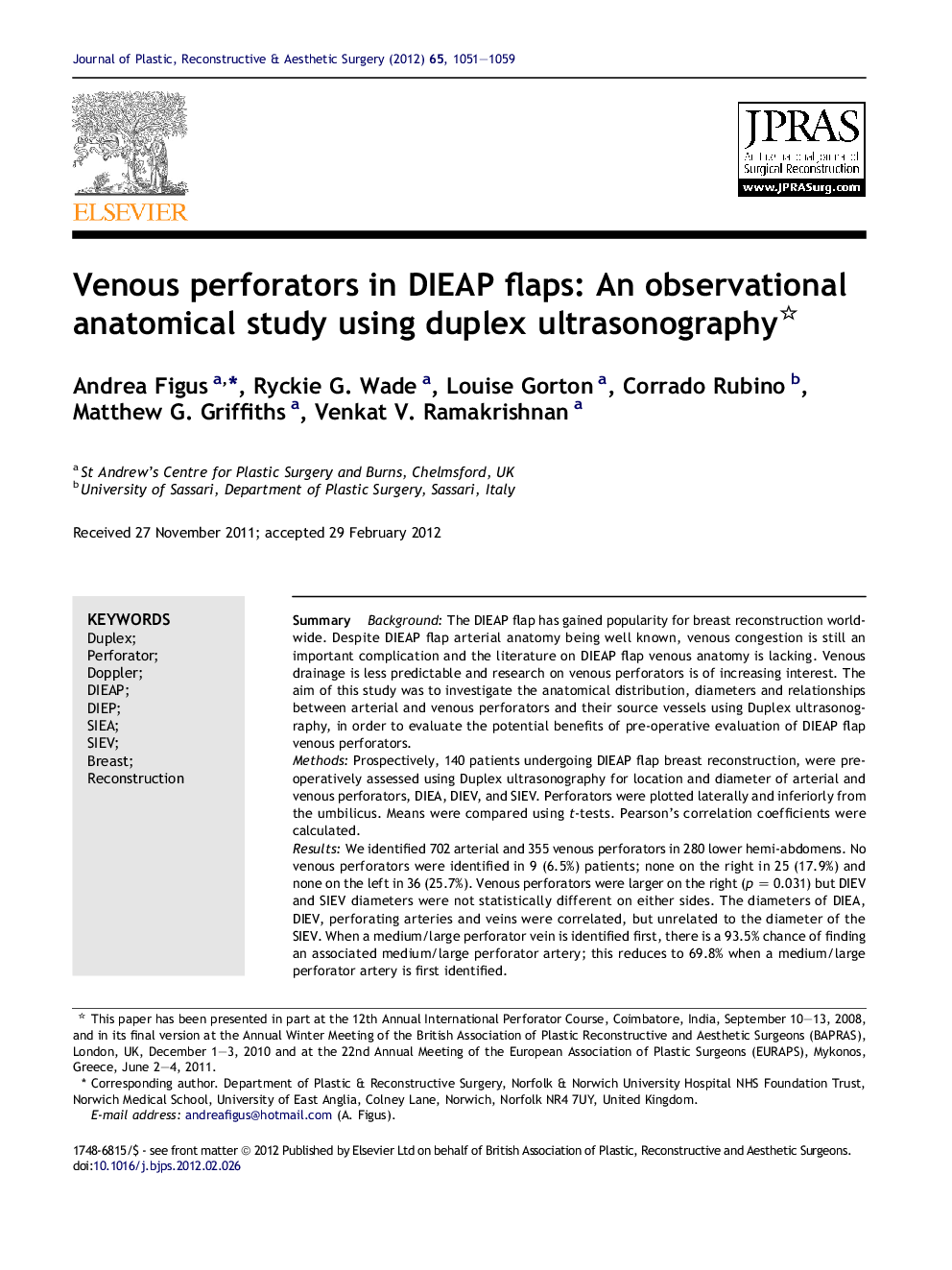| Article ID | Journal | Published Year | Pages | File Type |
|---|---|---|---|---|
| 4119474 | Journal of Plastic, Reconstructive & Aesthetic Surgery | 2012 | 9 Pages |
SummaryBackgroundThe DIEAP flap has gained popularity for breast reconstruction worldwide. Despite DIEAP flap arterial anatomy being well known, venous congestion is still an important complication and the literature on DIEAP flap venous anatomy is lacking. Venous drainage is less predictable and research on venous perforators is of increasing interest. The aim of this study was to investigate the anatomical distribution, diameters and relationships between arterial and venous perforators and their source vessels using Duplex ultrasonography, in order to evaluate the potential benefits of pre-operative evaluation of DIEAP flap venous perforators.MethodsProspectively, 140 patients undergoing DIEAP flap breast reconstruction, were pre-operatively assessed using Duplex ultrasonography for location and diameter of arterial and venous perforators, DIEA, DIEV, and SIEV. Perforators were plotted laterally and inferiorly from the umbilicus. Means were compared using t-tests. Pearson's correlation coefficients were calculated.ResultsWe identified 702 arterial and 355 venous perforators in 280 lower hemi-abdomens. No venous perforators were identified in 9 (6.5%) patients; none on the right in 25 (17.9%) and none on the left in 36 (25.7%). Venous perforators were larger on the right (p = 0.031) but DIEV and SIEV diameters were not statistically different on either sides. The diameters of DIEA, DIEV, perforating arteries and veins were correlated, but unrelated to the diameter of the SIEV. When a medium/large perforator vein is identified first, there is a 93.5% chance of finding an associated medium/large perforator artery; this reduces to 69.8% when a medium/large perforator artery is first identified.ConclusionsThere is no correlation between the sizes of perforator veins and DIEV, and the size of the SIEV. Our data suggests that first identifying a medium/large venous perforator increases the chances of finding a better suitable perforator complex. Pre-operative evaluation of venous perforators may be of great interest for its potential clinical benefits.
